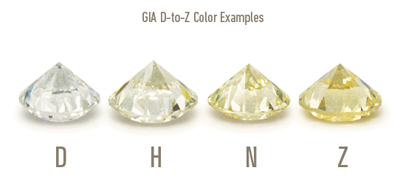Last week, we gave a broad overview of the 4Cs. Today, we discuss how to evaluate diamond color. Did you know most diamonds are not truly colorless and contain subtle hints of yellow or brown?
 The color evaluation of most gem-quality diamonds is based on the absence of color.
The color evaluation of most gem-quality diamonds is based on the absence of color.
A chemically pure and structurally perfect diamond has no hue, and consequently, a higher value. The GIA Color Grading System measures the degree of colorlessness by comparing a stone, under controlled lighting and precise viewing conditions, to masterstones of established color value. Many of these color distinctions are so subtle that they are invisible to the untrained eye; however, these distinctions make a very big difference in diamond quality and price.
The GIA Color Grading Scale is the industry’s most widely accepted grading system.
Check out this interactive tool for viewing the color subtleties of diamonds that fall within the D-to-Z color range, and tell us what you think. Later this week, we’ll shed some light on diamond clarity.
Click here to return to the Diamond Grading Scales.
Color diamond images are for reference only and may not reflect true diamond color quality grades. Images are not for color diamond grading.
Updated: GIA report scales have been updated with the newest scales as of May 2014
Custom Field: Array
